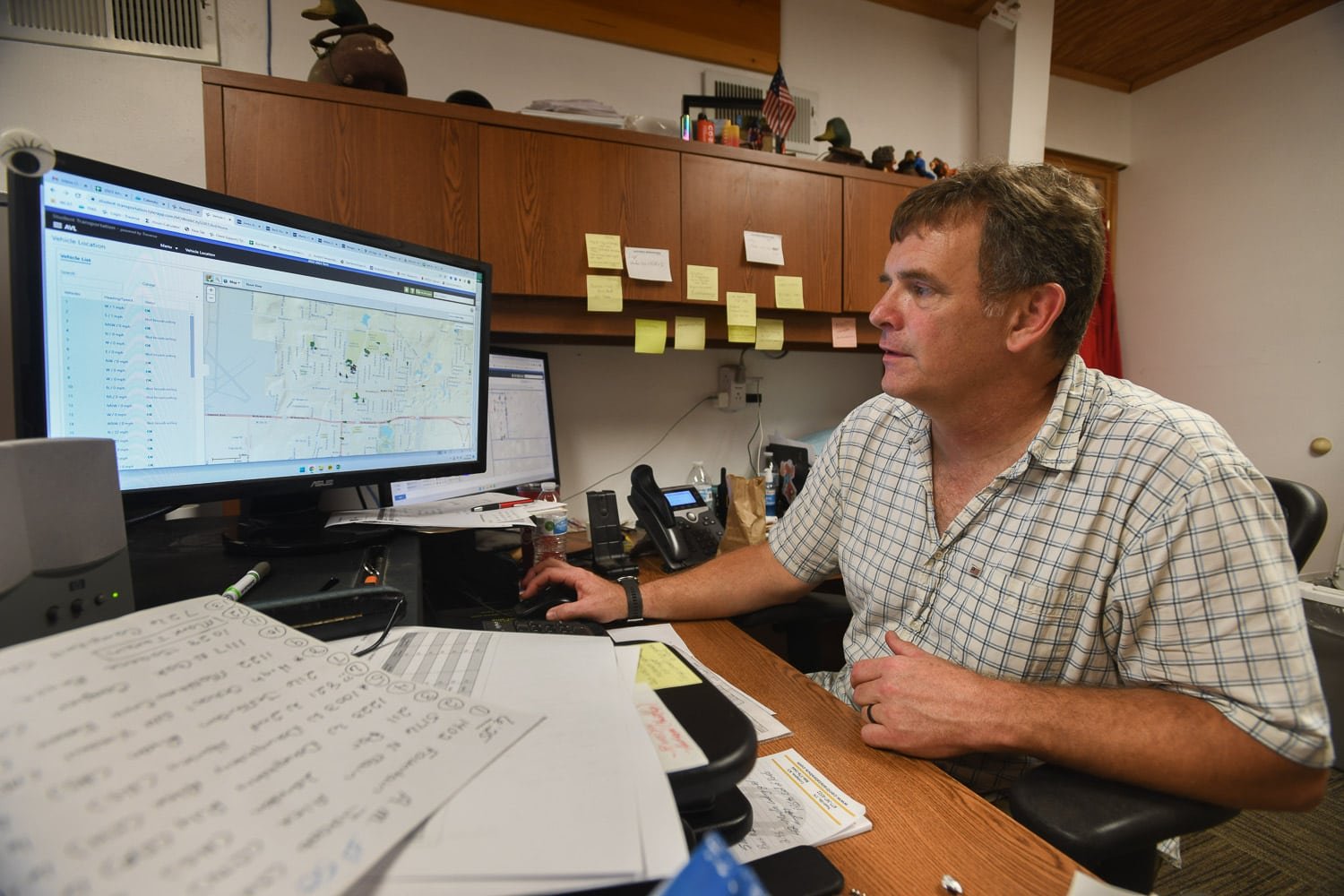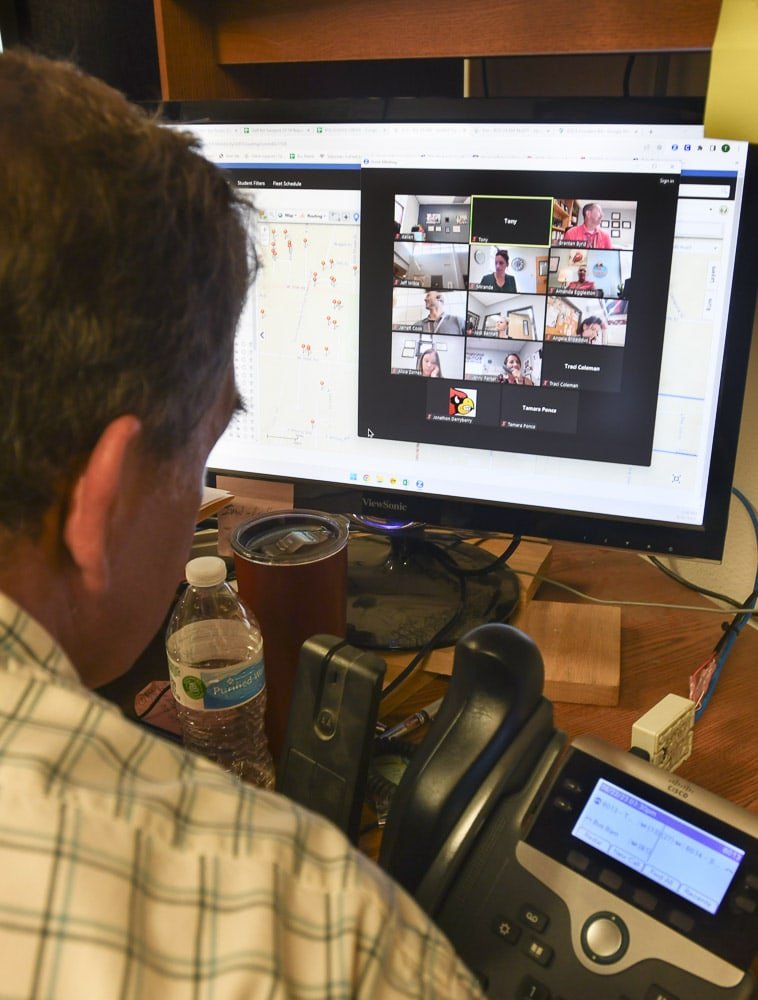

Bob Foos

Donnie Eichelburger takes his own cooling station onboard as he sets off on his route Tuesday.
In the first few days of school, one of the most hectic times must be immediately after school’s out – when it’s time to get 1,900 bus riders (nearly half the enrollment) back home.
At 2 p.m., Tony Philpot, transportation director for the Webb City R-7 School District, closes the door to his office, puts all else aside and only takes busing-related calls.
Drivers arrive, prepare their buses, socialize a little and then take off for the schools.
“It builds to a crescendo,” says Philpot.
Over the radio, a driver done loading her students, is heard telling the driver in front of her, “Are you ready to go? It’s hot out here. Let’s go!”
Moments later, a school staffer can be heard. “Bus 42, I have two kids at the junior high who missed their bus. Can you come back and get them?”
Other first-week situations arise.
“Grandma called and said the bus didn’t stop” to let off her granddaughter.
By this time, Philpot can see each school principal and both assistant superintendents live on a grid sharing problems and deciding how to solve them.
One bus is too far along on its route to go back with a two brothers who didn’t get off at their stop. If it did, the other kids would be on board way too long on a “nasty hot” day. An assistant principal is sent to intercept the bus at a stop and take the kids home.
Parents of students missing their bus are given the choice of coming to get them or wait until the bus route is finished and the driver comes back to deliver the child.

Transportation director Tony Philpot monitors the location of buses as they complete their routes. Lists are available to see if a student is on the right bus. He talks directly by radio with drivers and is on Zoom with all building administrators.
4:30 p.m.
It’s a relief as the buses return empty one by one. Philpot, still at his desk, unwraps and eats the sub sandwich he brought for lunch.
“Honestly, all things considered, with a few exceptions, we hit our mark,” he says. “We’re all clear 30 minutes earlier” than the first day.
Beginning his fifth year as director of transportation, Philpot credits his staff, drivers and technological improvements for smoothing out problems quicker than before.
Two years ago, he recalls it took a full week to get settled into a routine. He’s hoping two days is all it takes this year, adding, “You’ll never get past the first day” without problems.
The technological advances include GPS tracking on each bus and interior video recordings of every bus trip that are archived to settle any grievance that may come up.
When a bus stop sign is extended, a camera on the stop arm automatically activates to record how the driver slowed down, when the stop sign came out and if any vehicles failed to stop.
Depending on grant money, Philpot is planning for a card-scan system that will identify all students as they enter the bus. That will solve the problem of not knowing if a student got on the bus, got on the wrong bus or is still on the bus instead of getting off.
Philpot emphasizes that drivers have a lot of responsibilities. Besides keeping their eyes on the road, they have to manage behavior behind them.
“Our drivers do an excellent job,” he says. “I feel very fortunate that we have a good crew.”
Josh Flora, assistant superintendent of business operations, excitedly announced at this month’s School Board meeting that all bus driver positions had been filled.
A year ago, the district was short nine drivers and stayed six drivers short the rest of the school year.
There are 46 drivers for 42 routes. The district was able to let two drivers, Nancy Russow and Larry Speer, keep driving even after they’ve retired.
Philpot says the nice raise drivers and other employees received may have something to do with the district’s ability to fill all of its bus driver positions.
He says school districts are in a competition to recruit drivers. While Webb City held a salary advantage in previous years, he says other districts are catching up.
Philpot notes that fewer students took the bus during the pandemic but since then “they piled back on.” He estimates there are 1,900 riders going to and from school. Counting trips for special services and activities, he says certain “every kid is going to ride the bus” at some point.
The district has 49 regular 77-passenger buses and one minibus.
In all, there are 60 employees in the transportation department.
“I feel very fortunate that we have a good crew,” says Philpot.


Morning temperatures are tolerable as these students board a bus at a collection point in Webb City.